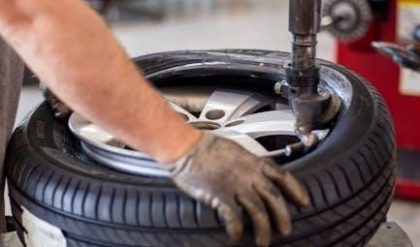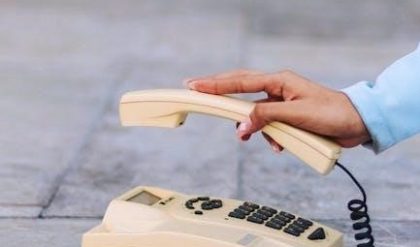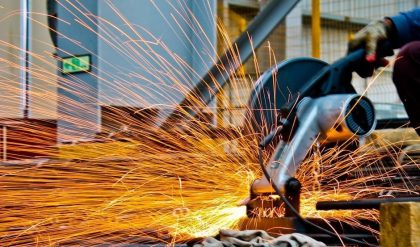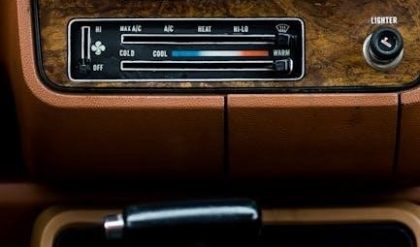Honda OBD2A Auto to Manual ECU Conversion⁚ A Comprehensive Guide
This guide details converting your Honda’s automatic OBD2A ECU to a manual one. It covers identifying your ECU, distinguishing OBD2A from OBD2B, selecting the correct manual ECU, necessary hardware, the step-by-step swap process, troubleshooting, post-conversion testing, alternative solutions, potential complications, and helpful resources. Successful conversion requires careful attention to detail.
Identifying Your Honda’s ECU
Locating your Honda’s Engine Control Unit (ECU) is the first crucial step. The ECU’s location varies depending on your Honda model and year. Generally, it’s situated under the dashboard, often hidden behind a panel or under the carpet near the driver’s side. Consult your vehicle’s service manual for the precise location. Once located, carefully inspect the ECU for identifying information. The ECU will usually have a sticker with a part number, which will help you determine the type of ECU you have (OBD1, OBD2A, or OBD2B). Pay close attention to this number; it is vital for choosing the correct replacement. Take clear photos of the ECU and its identifying information for reference. This information is crucial for ensuring compatibility with the replacement manual ECU. If you encounter difficulty identifying the ECU, seeking assistance from online Honda forums or a qualified mechanic is recommended.
Determining OBD2A vs. OBD2B
Distinguishing between OBD2A and OBD2B systems is essential for a successful ECU swap. OBD2A and OBD2B are different iterations of Honda’s OBD2 diagnostic system, with key differences in their ECU connectors and communication protocols. OBD2A, typically found in vehicles from the mid-1990s, utilizes a 2-wire IACV (Idle Air Control Valve) and a 4-wire narrowband O2 sensor, whereas OBD2B (late 1990s and beyond) uses a 3-wire IACV and a 5-wire wideband O2 sensor. The ECU connector shape and pinouts also differ between OBD2A and OBD2B systems. Incorrectly identifying the system can lead to compatibility issues and prevent the manual ECU from functioning correctly. The year of manufacture is a good starting point, but always verify using the ECU part number or a visual inspection of the connector. Online resources and Honda service manuals provide detailed information on identifying the OBD system in your specific Honda model. Accurate identification is crucial for selecting a compatible manual ECU and harness.
Choosing the Correct Manual ECU
Selecting the appropriate manual ECU is critical for a smooth conversion. The chosen ECU must be compatible with your specific Honda model, engine, and year. Factors such as engine type (e.g., B18B1, D15B), transmission type (manual), and OBD system (OBD2A) must all match. Using an incompatible ECU can lead to numerous issues, including starting problems, misfires, incorrect fuel delivery, and check engine lights. Consult online resources such as Honda-specific forums and technical websites for compatible ECU part numbers. Remember that even within the same model year, variations in engine options and features can influence ECU compatibility. Pay close attention to the ECU’s part number and cross-reference it with your vehicle’s specifications to ensure a perfect match. Using a used ECU introduces potential problems with prior damage or modifications. If acquiring a used ECU, a thorough inspection and testing are recommended before installation. The correct ECU choice is paramount for a successful and reliable conversion.
Necessary Hardware⁚ Wiring Harness and ECU
Beyond the crucial manual ECU, the correct wiring harness is essential for a successful OBD2A auto-to-manual conversion. A manual transmission wiring harness, specific to your Honda model and year, is required. Using the automatic harness will result in incompatibility and prevent the engine from running correctly. These harnesses differ significantly, as the automatic harness includes wiring for components absent in manual transmissions, like the automatic transmission control system. Attempting to modify the automatic harness is generally not recommended due to the complexity and potential for errors. A dedicated manual harness ensures all necessary circuits are connected properly and eliminates potential issues arising from incorrect wiring. Sourcing a used manual harness from a reputable source is cost-effective, but careful inspection for any damage or prior modifications is vital. New harnesses are available but come at a higher price point. Ensure the harness is compatible with both your vehicle and the chosen manual ECU; any mismatch will cause problems. Accurate identification of your Honda’s model, year, and engine is critical for obtaining the correct harness. A correctly matched harness is crucial for a safe and functional conversion.
The ECU Swap Process⁚ A Step-by-Step Guide
Before commencing the ECU swap, disconnect the negative battery terminal to prevent electrical shorts. Carefully locate the existing ECU, usually found in the engine bay, often near the firewall. Once located, unplug the connectors from the old automatic ECU. Take clear pictures or detailed notes of the connector positions for reference during reassembly. Next, install the new manual ECU, ensuring it’s securely seated in its designated location. Connect the wiring harness to the new ECU, precisely matching connector positions to those documented earlier. Double-check all connections to prevent issues. Reconnect the battery terminal. Before starting the engine, inspect all connections one last time. Starting the engine for the first time after the swap may reveal immediate problems. If the engine starts and runs smoothly, proceed to the next steps. However, if there are issues (like the engine not starting or running roughly), carefully re-check all connections and ensure the correct ECU and harness are used. Referencing online resources and community forums can help troubleshoot problems. This detailed approach minimizes the risk of errors and ensures a smoother transition. Remember to always exercise caution when working with automotive electronics.
Troubleshooting Common Issues
After the ECU swap, several issues might arise. A “check engine” light could illuminate, indicating a problem detected by the ECU. Use an OBD-II scanner to retrieve diagnostic trouble codes (DTCs), providing clues to the problem’s source. Common DTCs might relate to the transmission, indicating compatibility issues or incorrect wiring. Double-check all wiring connections, paying attention to the correct pin assignments in both the ECU and the car’s harness. Ensure that the chosen manual ECU is compatible with your specific Honda model and engine. Improperly grounded components can disrupt the ECU’s functionality, leading to erratic engine behavior or failure to start. Verify all grounds are secure and corrosion-free. If the engine runs roughly or stalls, inspect the fuel system, including the fuel pressure regulator and injectors. A faulty IACV (Idle Air Control Valve) can also cause idling problems. Test or replace it if necessary. If you encounter persistent issues, consult online forums or specialists for additional assistance. Documenting the steps taken throughout the process is crucial for efficient troubleshooting. Consider seeking professional help if problems persist after thorough self-diagnosis.
Post-Conversion Testing and Adjustments
Once the Honda OBD2A ECU swap is complete, thorough testing is crucial. Start the engine and monitor for any unusual sounds or behaviors. Check the engine’s idle speed; it should be smooth and consistent. Verify the vehicle’s responsiveness across the RPM range. Observe the exhaust for any unusual smoke or smells, indicating potential problems with combustion or fuel delivery. Use an OBD-II scanner to check for any diagnostic trouble codes (DTCs) that may have surfaced. If any codes appear, address them accordingly, referring to a repair manual or online resources. Pay close attention to the transmission’s functionality; ensure all gears engage smoothly and without hesitation. Test the vehicle’s acceleration and braking performance, noting any unusual behavior. Road testing is highly recommended to evaluate the overall performance and identify any subtle issues that may not appear during static testing. Fine-tune the idle speed and air-fuel mixture using a fuel management system or professional tuning services if necessary. Document all findings, including any adjustments made, for future reference. Regular monitoring after the conversion is crucial to detect and address potential long-term issues.
Alternative Solutions and Workarounds
While a direct ECU swap is the most effective method, alternative approaches exist for Honda OBD2A auto-to-manual conversions. One option involves using a standalone engine management system (EMS). Standalone EMS units offer advanced tuning capabilities and flexibility but require significant technical expertise and often involve custom wiring. This approach bypasses the stock ECU entirely, offering comprehensive control over engine parameters. Another less common solution is modifying the existing automatic ECU’s software. This is extremely complex and requires specialized tools and programming knowledge. It’s generally not recommended for novice mechanics due to the high risk of irreversible damage. Modifying the stock ECU’s software may involve altering various parameters including shift points, idle speed, and fuel delivery; this is only feasible if you have the appropriate tools and expertise. A simpler approach, though less precise, might involve using a manual ECU from a similar Honda model year that’s compatible with your engine and transmission. However, this may lead to less-than-optimal performance and potential issues with error codes. Before attempting any alternative solution, carefully research its feasibility and potential complications. Ensure you possess the necessary skills and resources to avoid irreversible damage to your vehicle.
Potential Complications and Limitations
Several complications can arise during a Honda OBD2A auto-to-manual ECU conversion. Incorrect ECU selection is a common issue, leading to compatibility problems and potentially causing the engine to run poorly or not at all. Improper wiring can result in electrical faults, damaging components or causing the vehicle to malfunction. A mismatch between the ECU and other vehicle systems, like the transmission control unit (TCU), might lead to transmission problems, especially if the TCU is not properly addressed. Furthermore, some OBD2A ECUs might have immobilizer systems that require specialized tools or procedures to bypass or reprogram, adding complexity. Issues with the vehicle’s diagnostic system can arise post-conversion, potentially triggering check engine lights or preventing proper functionality. The conversion may also necessitate modifications to the vehicle’s wiring harness, requiring extensive knowledge of automotive electrical systems; Inaccurate calibration after the swap can affect engine performance, fuel efficiency, and emissions, potentially leading to issues during emissions testing. Finally, certain Honda models or engine variants may present unique challenges, depending on the specific year, model, and engine type. Always consult detailed guides and resources specific to your vehicle before attempting this conversion.
Resources and Further Reading
For successful Honda OBD2A auto-to-manual ECU conversion, several resources can provide invaluable assistance. Online forums dedicated to Honda enthusiasts, such as those found on sites like Honda-Tech or Civic Forums, offer extensive threads and discussions on this specific modification. These forums often contain detailed guides, troubleshooting tips, and firsthand experiences from users who have successfully completed the conversion. Furthermore, specialized websites and blogs focusing on Honda performance modifications and ECU tuning can provide in-depth information and technical advice. These resources frequently include wiring diagrams, pinouts, and ECU part numbers, facilitating the process. Consider searching for specific model year and engine-related information to find guides tailored to your vehicle. Remember to cross-reference information from multiple sources to ensure accuracy and avoid potential errors. YouTube channels specializing in Honda modifications often feature video tutorials demonstrating the ECU swap procedure, providing a visual aid to complement written instructions. While online resources are plentiful, consulting a professional mechanic experienced in Honda ECU swaps can offer expert guidance and prevent potential issues. Always prioritize safety and ensure you possess sufficient mechanical knowledge before undertaking this conversion.





